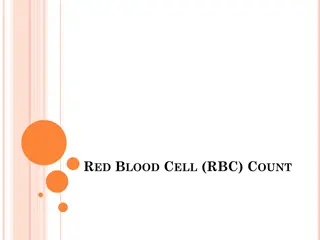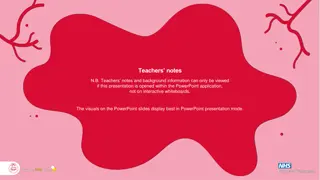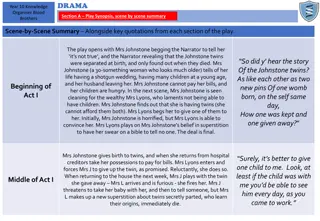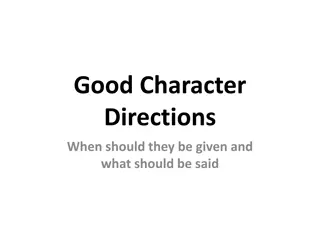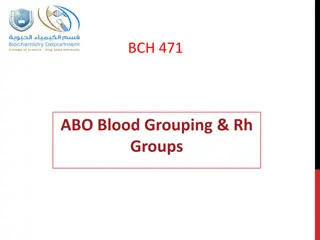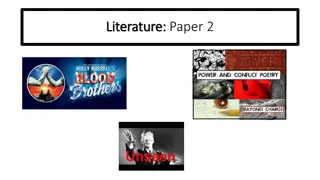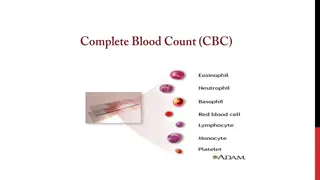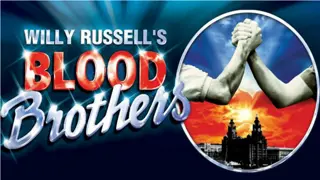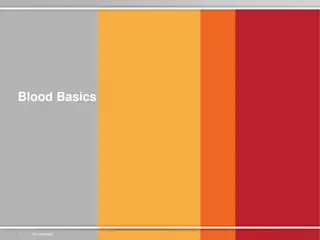Character Choices in Blood Brothers Play
Dive into the character choices made by directors in presenting Mickey and Edward on stage in the play "Blood Brothers." Consider the physical appearance, interactions, and context in which these characters are portrayed, shedding light on the nuances of characterisation in theatrical performances.
Download Presentation

Please find below an Image/Link to download the presentation.
The content on the website is provided AS IS for your information and personal use only. It may not be sold, licensed, or shared on other websites without obtaining consent from the author.If you encounter any issues during the download, it is possible that the publisher has removed the file from their server.
You are allowed to download the files provided on this website for personal or commercial use, subject to the condition that they are used lawfully. All files are the property of their respective owners.
The content on the website is provided AS IS for your information and personal use only. It may not be sold, licensed, or shared on other websites without obtaining consent from the author.
E N D
Presentation Transcript
Date: Title: What choices do directors make when considering how to present their characters on stage? Recap questions: 1. What is a pronoun? 2. What is a preposition? 3. What does the term didactic mean? 4.What agreement does Mrs Johnstone come to with Mrs Lyons and why does she come to this agreement? 5.What appeal is made to the audience through the prologue? Do it now Do it now Miss Odell is currently reading
A drama is a piece of literature that is written for performance in front of an audience. New knowledge New knowledge For this reason, we are going to start this unit by watching a performance of this musical. There are two caveats: 1. The quality of the picture isn t always as clear as it would be if you were seeing a production live. However, I feel it is still worth watching. 2. There is some swearing in this musical. We are mature enough to recognize this and acknowledge it but not replicate it. 28.00-52.12
What have we seen so far? Seven years pass, and Mickey, the twin who stayed with Mrs Johnstone, grows up in a rough-and-tumble environment. Edward, who grew up believing Mrs Lyons to be his mother, matures in the lap of luxury. When the boys meet by chance, they become fast friends. When they find that they share a birthday, they agree to become blood brothers , allying against Mickey s bullying older brother, Sammy. When Mrs Johnstone realizes that the two have met, she is horrified, and sends Edward away. Mrs Lyons reacts even more violently and contemplates uprooting her entire family in order to escape. New knowledge New knowledge Despite their mothers approval, Mickey and Edward continue to see each other, and we witness a series of children s games (many involving guns), as the two boys play with their other friend, Linda. Getting more anxious about the situation and the amount of time Edward is spending with Mickey, Mrs Lyons tells her husband she wants to move out of the area. (Summary taken from LitChartshttps://www.litcharts.com/lit/blood-brothers/summary)
Characterisation Characterisation is the way an author or actor describes or shows what a character is like. Oracy opportunity opportunity When a character is presented on stage, a director needs to make a number of decisions about how they should present the character. They need to consider what purpose the character serves. Key questions: 1. What purpose do you think the characters of Mickey and Edward serve? 2. What decisions do you think the director had to make about how to present these characters to the audience? Oracy Talk partners
Physical appearance The way they speak Pen to paper Pen to paper Their interactions with others Clothing Using these ideas, what might we be able to say already about the choices the playwright (Russell) and director have made in presenting Mickey and Edward to the audience? Setting and context
The juxtaposition of Mickey and Edward The juxtaposition of Mickey and Edward When we consider how Mickey and Edward have been presented i.e. the decisions the playwright / director has made about these characters - we can clearly see that Mickey and Edward have been juxtaposed. A juxtaposition is a contrast between objects, images or ideas that when placed together, the differences between them are emphasised. Reflection Reflection For example: The juxtaposition of London and the Carribbean. The juxtaposition of chilli and ice-cream. The juxtaposition between happiness and sadness. Key question: Why might we be able to argue that Willy Russell has created a juxtaposition between Mickey and Edward? Starting sentence: Willy Russell, arguably uses juxtaposition to present the characters of Mickey and Edward to the audience when Challenge question: Why do you think Willy Russell has done this? What purpose do you think this juxtaposition serves? Starting sentence: The clever use of juxtapositionhere helps to reveal






